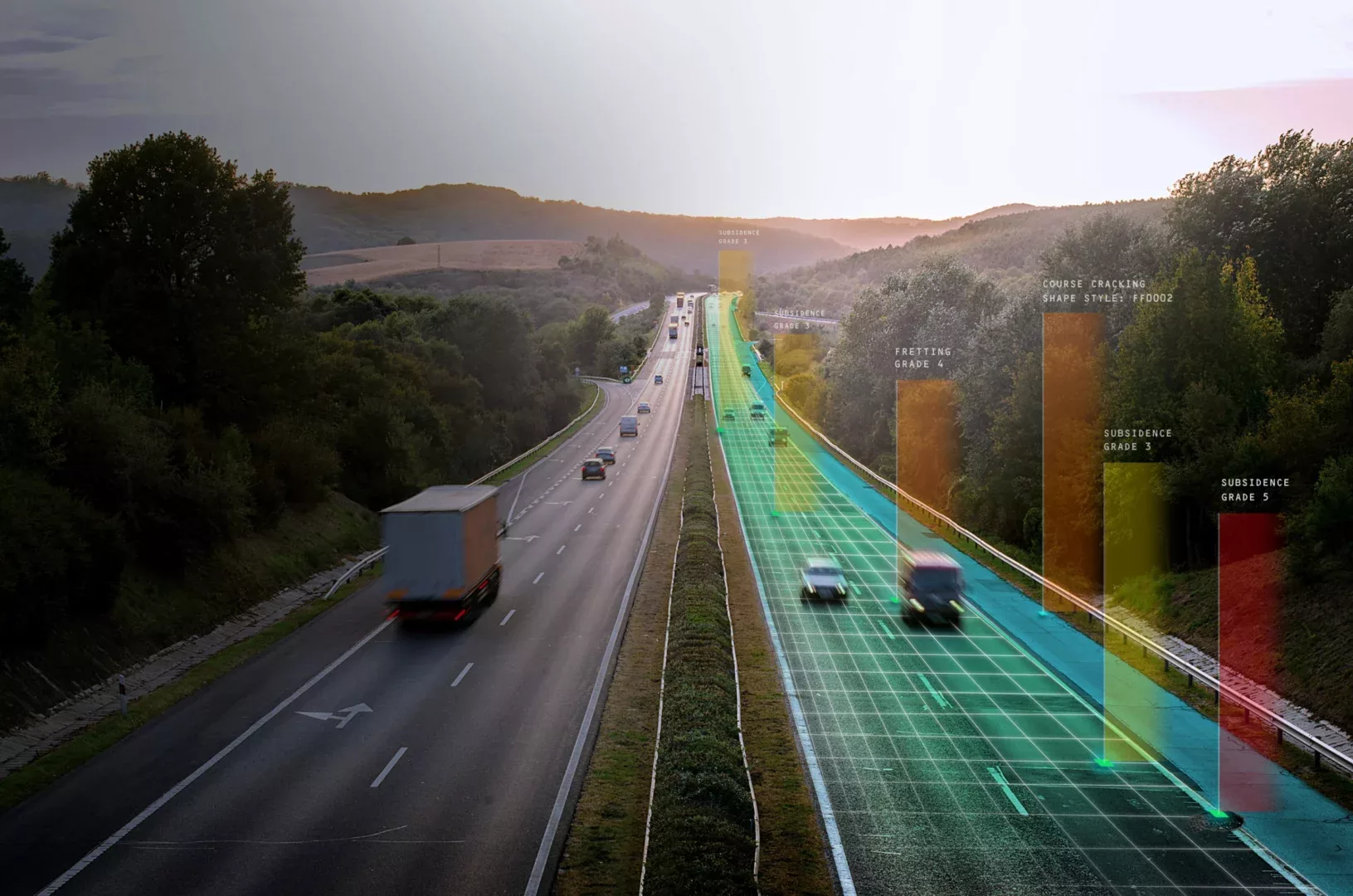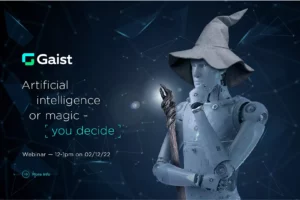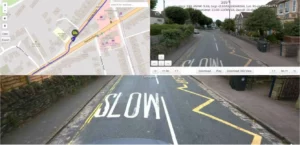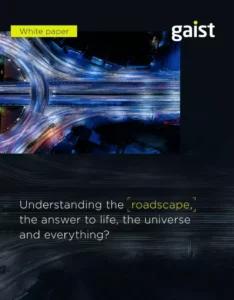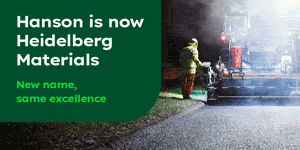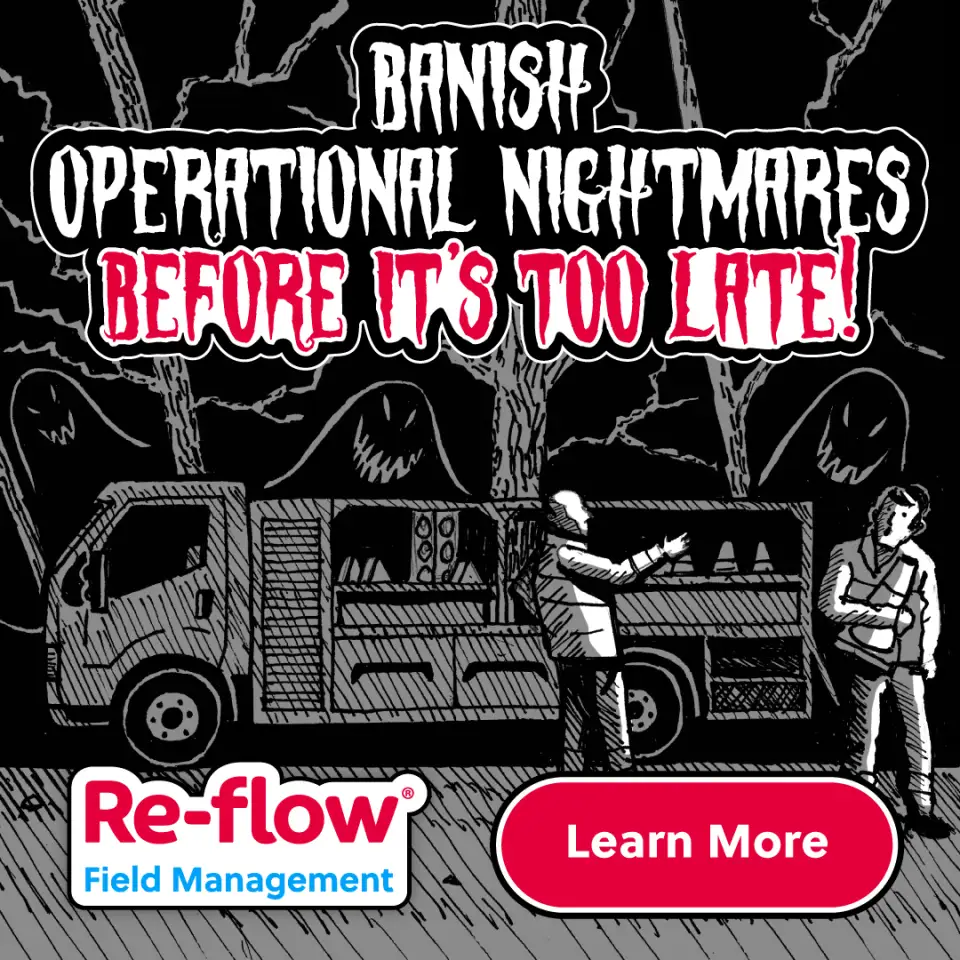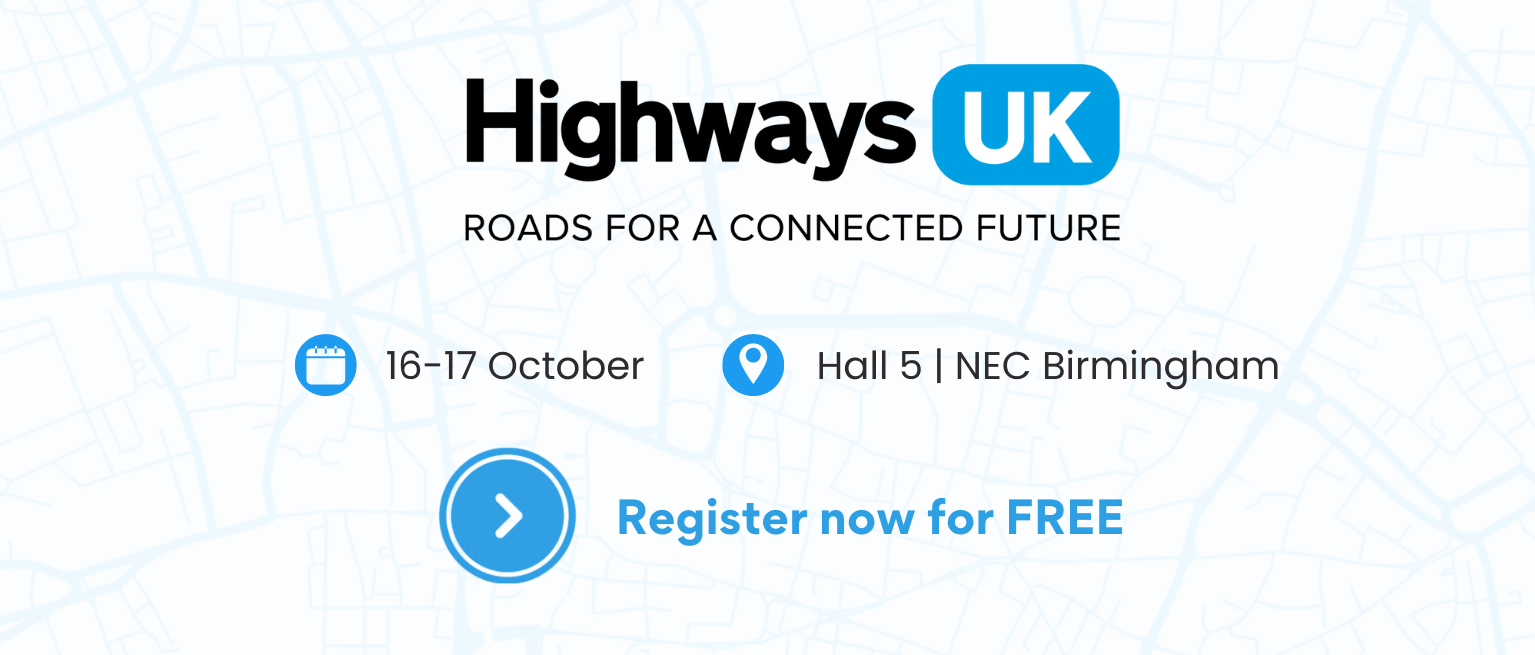Blink and you’ll miss its work. The processing of millions of rows of data in seconds makes Artificial Intelligence one of the most useful technologies to have emerged in the last decade.
Despite already proving its worth to some extent, A.I. still has massive potential to help shape the way infrastructure is planned, constructed, and maintained in the future, alongside its ability to help predict traffic flow and movements in real-time as well as help create a safer network.
Highways technology company Gaist is passionate about utilising the power of data and machine learning technology to help it with its ambitious mission to build the worlds ‘deepest, most sophisticated understanding of the whole roadscape environment’. That’s why the company has its own A.I. Innovation Hub where their own in-house computer scientists and research specialists, work closely with the University of York, to deploy the latest deep learning research techniques to accelerate the development of Gaist’s tools, techniques and intellectual property.
As an example of the power of Gaist’s capability, in 2019 Gaist were involved in a Department for Transport (DfT) project where A.I. was used to develop the most thorough understanding ever of road markings in England. These were analysed after 100,000 miles of roads were surveyed to help build up a detailed picture of where and what level of investment is needed.
But it was the technology that was behind this project that was more fascinating. Over 146 million High Definition road images from Gaist’s national databank and cutting-edge A.I. technology was used to assess over 100,000 miles of classified roads as part of this project. It was the largest exercise in assessing road marking condition ever undertaken in England.
It could be argued that without A.I. this project would not have been possible, because the scale of the analysis task would have been too onerous for humans and too expensive for the client. This project demonstrates that AI is really opening up new insight into our road network.
But just what does A.I. now offer us in terms of capability?
What tasks can A.I. be trusted to do?
How much automation can we drive out of A.I.?
Will it ever be ready for 100% responsibility given the potential consequences of getting it wrong?
In this article, Gaist’s Chief Executive, Steve Birdsall, and Chief Technology Officer, Dr Stephen Remde, discuss their philosophy and their technology and talk openly about the role of A.I. not only for Gaist’s own developments but for the future of the wider highways sector as well as understanding why the role of A.I. is becoming vital and why it is important to know A.I.’s limits.
Q: How is Gaist currently making best use of A.I.?
Steve Birdsall (SB): “In general the capability of our A.I. applications are continuing to rapidly grow along with the company, and it has a huge role in helping support us and our increasing customer base both here in the UK and support us in our global roll-out in different countries around the world as far away as Chile, Japan, Brazil and Mexico. It is allowing us to do more and more for less. This allows us to stay competitive despite the large investment into Research and Development.
Dr Stephen Remde (SR): “AI is a big part of the future for us. We continue to invest at a significant rate to help support our technical developments that will help provide information to road operators that will ensure they can make the best decisions. A.I. has to be trained in the right way to work consistently and accurately and our A.I. is getting closer and closer to the accuracy of humans, and even beating them at certain tasks. Where it’s not so strong, we are strategizing and creating training data. The better the training data is the better the outcome will be. The old saying “garbage in – garbage out” is still just as true with A.I. !
SB: “A lot of our focus with A.I. so far, has been based around automated location of assets and defects and the extents of different damage types across a range of highways assets.
A.I. is allowing us to analyse ever larger volumes of data much quicker than we could before, allowing our teams to concentrate more on the quality checking of the data we deliver ensuring we can deliver more and more accurate data without increasing the cost.
And it cannot be stressed enough that quality checking is paramount to developing systems around A.I. We still need humans ‘in the loop’ to provide the very high accuracy rates that Gaist has a reputation for.
What is artificial intelligence good at and what is artificial intelligence not good at?
SR: Artificial Intelligence is a very broad subject that has been studied for decades. We are mostly speaking about a subset of artificial intelligence, which we call Machine Learning. In the past decade, there have been amazing advances in hardware which have allowed some sophisticated image analysis techniques to be developed.
SB: It is important to understand what is meant by ‘intelligence’. The intelligence in machine learning is actually describing how the system ‘learns’ and builds up a capability to recognise objects, patterns and features. The outputs from A.I. are not intelligent! At best A.I. produces the same kind of data that humans can produce but mostly the outputs are much more simplistic than data produced by humans. And that should come as no surprise, as humans are actually intelligent beings, whereas the ‘artificial intelligence’ we are describing is actually ‘relatively simple machine logic’ and despite recent technological advances there is still a massive capability gap between the two.
But A.I. is a lot quicker at simple tasks and handles data at a scale that humans would find hard, if not impossible to handle.
So I should declare now that I think the name ‘Artificial Intelligence is misleading to many who don’t actually know how these systems work.”
SR: Gaist capture between 40-60 million images per month, and at a peak provides access to over 70,000 images per minute. Any automation we can provide at that level is beneficial.
One of the problems that occurs when organisations like ours processes millions of rows of data on a regular basis for several customers, is you can sometimes get a bottleneck with processing it and that can lead to costly and inconvenient time lags. The data processing speed of A.I is therefore a major advantage. We have used A.I. to speed up this process, reduce those bottlenecks and give us the opportunity to create a lot more insightful data.
As good as this is, A.I. is still only as good as the information you give it to learn from. If you give it erroneous or uninformed data, it will make bad decisions. Thankfully, our AI is being trained by our own inspectors, some of whom have been surveying roads for several years. Even so, we are not at the point yet where we can just leave it to make decisions for us, especially for example, in the context of safety on the highway network. As a company we support our customers with safety inspection with our SafetyView service, where we use our imagery systems to identify safety critical defects on a daily basis. Many defects in the highway have the potential to cause serious harm or worse. Given the limitations of A.I. that exist today, there is no way we could responsibly deploy a fully automated highway inspection with A.I. algorithms.
SB: “Network operators have a duty of care and it would be negligent to replace human perception that comes from millions of years of evolution for an algorithm that is known to be least effective at spotting irregular features. The implications of rushing to use A.I. in tasks such as safety inspections when it is nowhere near being proven as accurate enough for that task could be tragic and the legal ramifications are huge and costly.
SR: A deficiency of A.I. is that it has a limited awareness of context, which is important as the location and surroundings can make a defect more or less of a risk. Currently, A.I. that is being employed on highways surveying is essentially doing a relatively simple image recognition task, identifying and categorising lots of objects and features. Categorisation like that is also not ‘intelligent’. There is a long way to go before A.I. can understand the implications and remedial actions necessary or prioritise actions based on risk.
Is artificial intelligence being hyped and what are the implications if it is?
SB: “Sadly, there is a huge amount of hype and ‘headline grabbing’ when it comes to the subject of A.I. Companies that are in a rush to launch the latest A.I. product often skim over the limitations we have discussed. Unfortunately, that doesn’t serve anyone’s best interest and builds false expectation of this new capability.
I am worried that ‘over-hyping’ of A.I. will lead to a miss-trust of the technology and hamper companies like our own that are ‘quietly’ developing ground breaking technology that capitalises on the advantages of A.I. whilst leveraging the real intelligence of human beings in the system to bring safe and accurate information to our customers.
I would urge anyone buying into A.I. based technology to always consider ‘Does this solve my problem?’ Just because a system uses A.I. it does not mean it is good A.I. or gives you the solution to your problem.
“SR: “I think it is important to keep reminding ourselves that AI is making some fantastic advances, but as Steve said, we shouldn’t just rely on A.I. or indeed either approach as being definitive. When developing an output it is always good for A.I. to be led by a human but the combination of both means we can be constantly developing accurate, effective outputs that change the way we live, work and travel”
What questions should local authorities ask when considering the purchase of a system using artificial intelligence?
SB: “It is really important that before you employ an A.I. based system or any other system for that matter, you should understand exactly what problem you are trying to solve.
If, for example, you are interested in quick approximation of the condition of your network and are happy with coarse, simplistic data then a simple A.I. app may help you. However, if you need to develop something like a 3 year programme of works for example, with accurate financial models, understand the return on that investment, volumes of different materials and deterioration rates, then A.I. derived data on it’s own will not come close to delivering that level of insight.
Before you buy any system, check the accuracy of the outputs. This is important because A.I. does not in itself guarantee accurate consistent data outputs. More often than not they are far less accurate than human derived data.
It should also be considered that most A.I. systems used to analyse road condition requires a camera. If the system uses a poor quality camera then the detail in the image can easily be lost, due to low light, blur, glare etc. If the algorithm can not see the features, then the algorithm is powerless and the results will be poor and inconsistent. Therefore, the system loses it’s value and the client gets poor results. There is no point buying a very clever system to give you vague results.
This is why Gaist use the highest quality professional 360 degree cameras possible to ensure high quality outputs in all conditions, ensuring our accuracy is very close to 100%.
My advice always is; ‘don’t be too distracted by the science’. It is better to come to companies like ours with problems and we will take care of what technology is needed to give you a cost effective solution that exactly meets your needs.
Can you give any idea of how artificial intelligence might benefit the highways industry in the future?
SB: “Definitely it will bring benefits in a big way. It will reach into every aspect of what we do-from designing material and helping assess the safety of sites and the equipment on them, to inspecting roads to performance monitoring. Systems ‘supported’ by A.I. will improve efficiency in all these tasks.
But actually it is the data that A.I. systems are fed that will enable the biggest advances. As we have pointed out A.I. is simply a data processing method, the new data that will come from new sensors etc. will be the real accelerant of change. That is why Gaist is concentrating on developing better and better data because A.I. without good data is like a light bulb without electricity.
Over the years we have truly transformed what our customers know about their networks. But the really exciting transformation is just about to begin!
In our labs we are now working with data gathered from sensors that will be feeding back information about the performance of the entire UK road network on a minute by minute basis.
We will soon be able to tell our customers absolutely everything they need to know about the behaviour of the roads such as; the performance of materials under every type of condition, the deterioration in different locations, the effectiveness of winter maintenance etc.
We will be providing data back into the industry that will be used to drive the development of new materials and see when and where different defects have formed and under what conditions.
Harnessing this data with A.I. working to provide data analytics that never stops in it’s ability to continue to constantly and consistently crunch through extraordinary volumes of data to produce insight, is going to provide a tremendous leap forward in understanding for the entire road maintenance industry across the world and we at Gaist are incredibly proud to be leading this information revolution.



